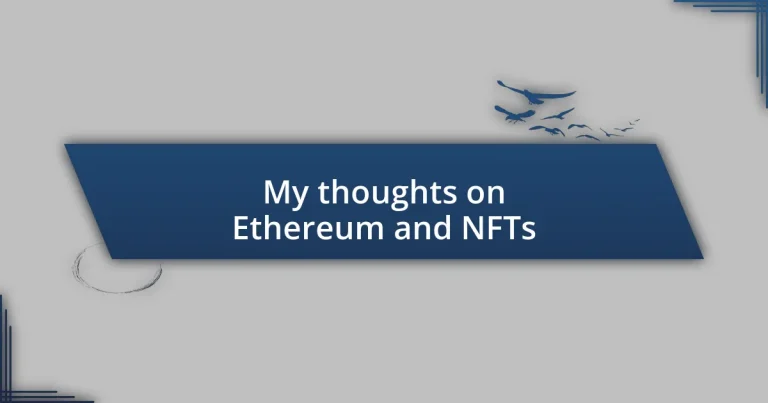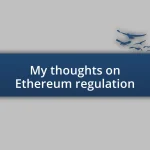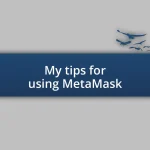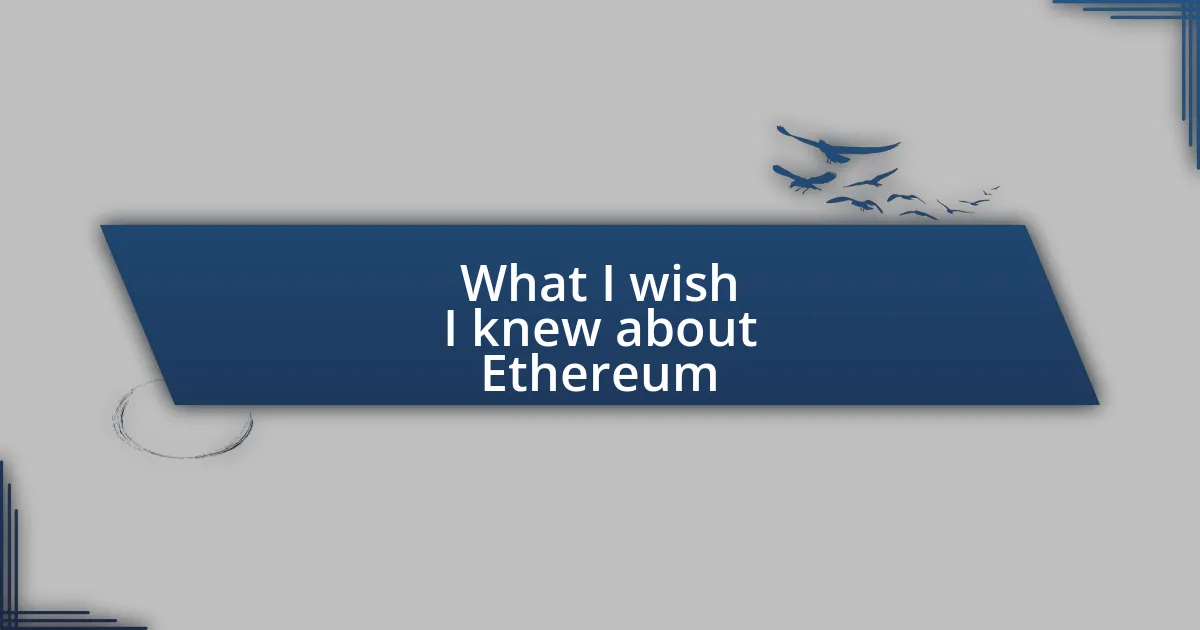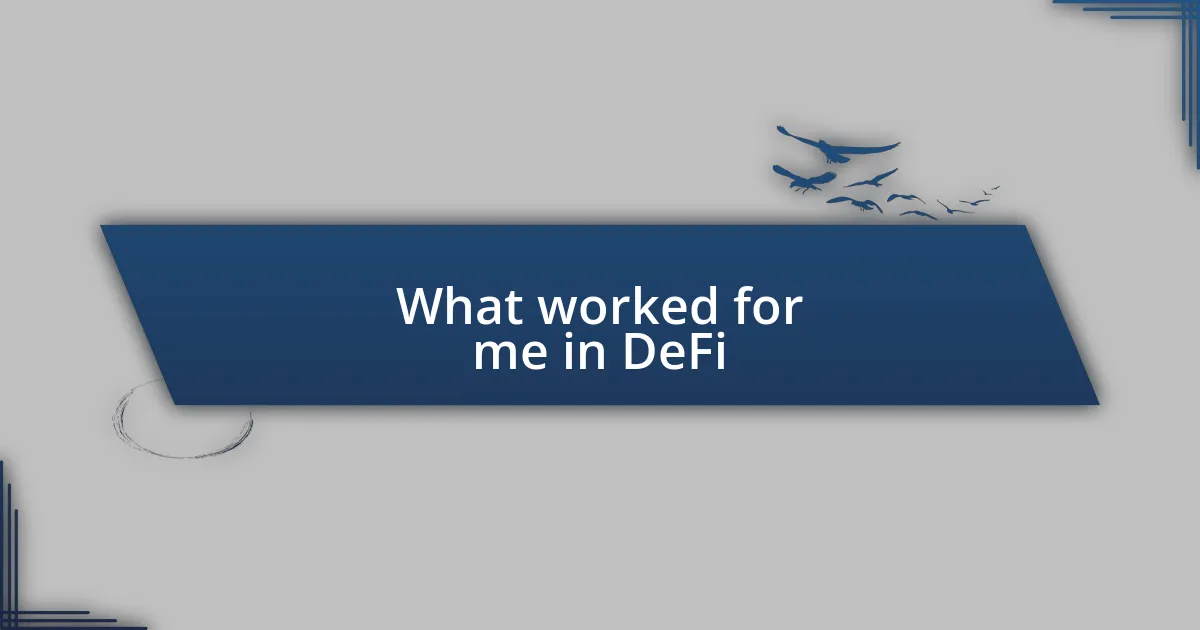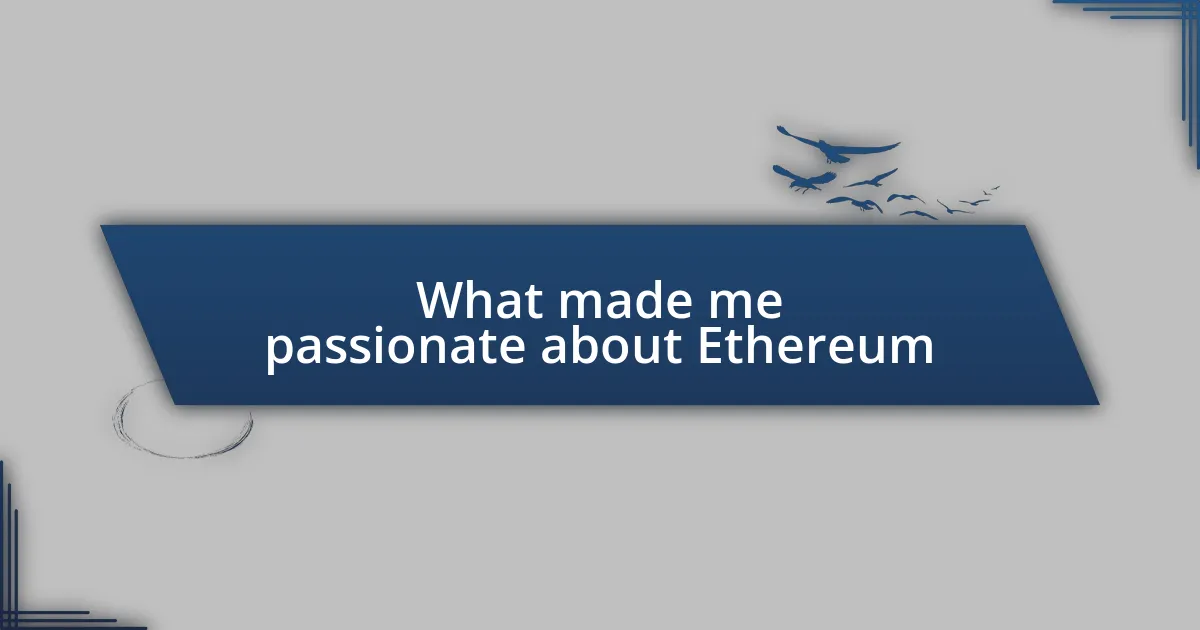Key takeaways:
- Ethereum expands blockchain functionality with smart contracts, allowing self-executing agreements without intermediaries.
- Non-fungible tokens (NFTs) revolutionize digital ownership, empowering artists and enhancing direct fan engagement.
- Challenges in the Ethereum ecosystem include scalability issues, dApp security concerns, and environmental impact of high energy consumption.
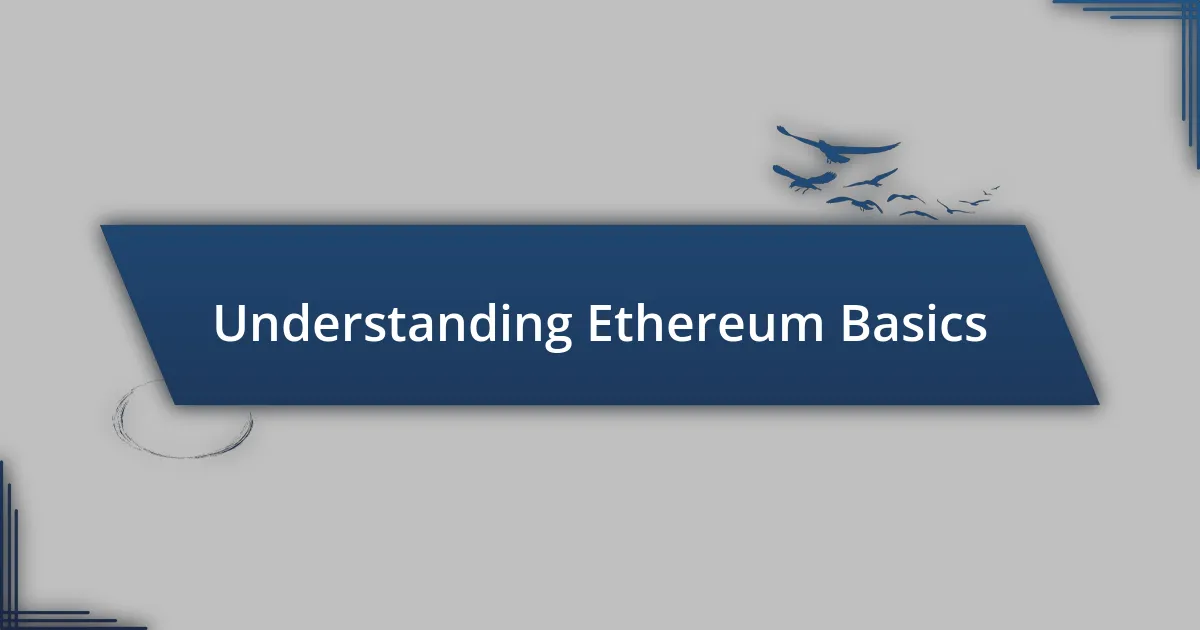
Understanding Ethereum Basics
When I first dove into the world of Ethereum, I was struck by how it expands on the concept of blockchain technology. Unlike Bitcoin, which primarily functions as digital currency, Ethereum introduces a platform for smart contracts—essentially self-executing agreements coded to run on the network. This layer of complexity made me realize just how versatile Ethereum is, opening doors to countless applications beyond currency.
I still remember my initial confusion over the concept of decentralized apps (dApps). It felt overwhelming to grasp how they operate on the Ethereum blockchain without a central authority. But then it clicked for me: just like building blocks, dApps can be developed to serve a plethora of purposes while maintaining transparency and security. Doesn’t that shift how we think about applications?
One key aspect that continually fascinates me is Ethereum’s native cryptocurrency, Ether (ETH). Each time I’ve interacted with different dApps, understanding the role of ETH as “fuel” for these applications has deepened my appreciation for the entire ecosystem. It feels almost like being part of a new digital economy, where my transactions are paving the way for innovations I can’t wait to see unfold.

Exploring Ethereum’s Smart Contracts
Smart contracts are truly one of the most revolutionary aspects of Ethereum that I’ve encountered. They enable developers to create agreements that automatically execute once predetermined conditions are met. The first time I interacted with a smart contract, I was amazed by its efficiency—no middlemen were necessary, just pure code managing everything. It felt like stepping into a world where trust was embedded in the technology rather than relying on people.
As I delved deeper into the functions of these contracts, I became intrigued by their programming language, Solidity. Developing my own smart contracts using Solidity was both challenging and rewarding. It was like learning to speak a new language where I could convey my ideas straight into code that would self-execute. Each successful deployment gave me a rush of accomplishment, emphasizing that the possibilities for innovation are boundless.
While exploring various applications of smart contracts, I’ve also encountered the potential pitfalls. Issues like code vulnerabilities can lead to significant losses, as I discovered when I read about certain exploit incidents in the news. These experiences reinforce the importance of coding diligence and thorough testing in the development process, making me appreciate the value of robust programming practices in this emerging landscape.
| Feature | Description |
|---|---|
| Self-Executing | Contracts execute automatically when conditions are met. |
| Decentralization | No intermediary needed, which reduces fraud risks. |
| Immutable | Once deployed, contracts can’t be altered, ensuring trust. |
| Language | Smart contracts are primarily developed in Solidity. |
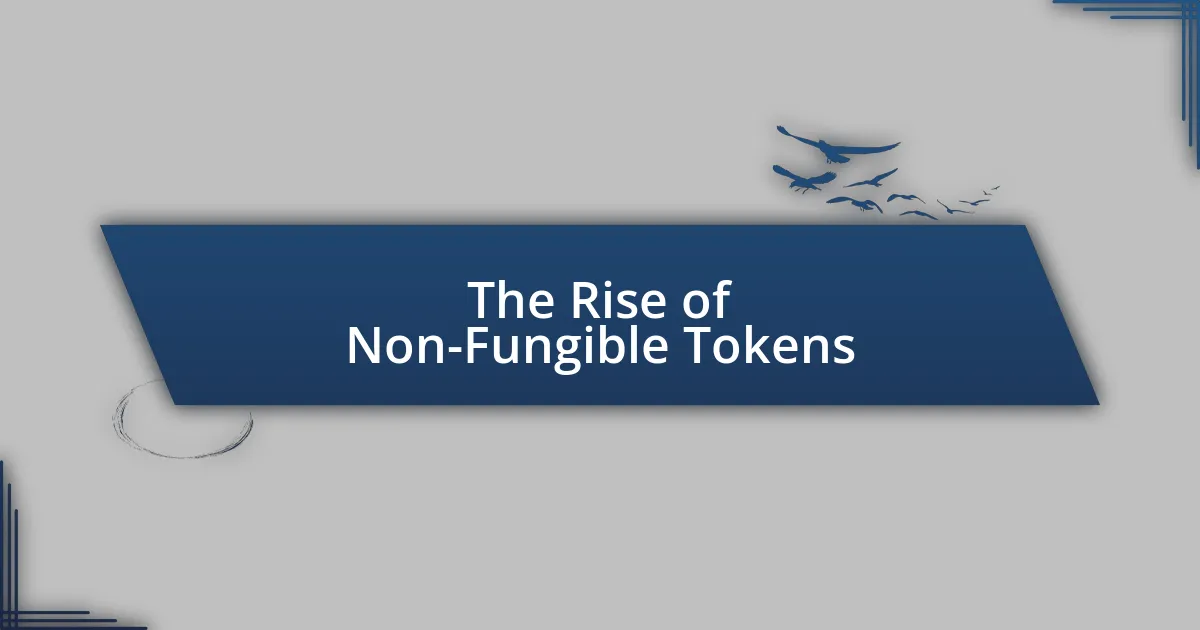
The Rise of Non-Fungible Tokens
The rise of non-fungible tokens (NFTs) has transformed the digital landscape in surprising ways. Initially, I was skeptical about the value of NFTs. However, witnessing artists and creators finally receiving recognition and compensation for their digital works opened my eyes. It felt like a breath of fresh air in a world where original content often went unnoticed and unpaid.
Consider these points about the surge of NFTs:
- Ownership Redefined: NFTs have created a new form of ownership, allowing individuals to claim genuine ownership of digital assets.
- Artists Empowered: Creators can sell their work directly to fans without relying on traditional gatekeepers, which is incredibly empowering.
- Collectible Culture: The hype around digital collectibles has sparked a new interest in collecting, reminiscent of trading cards but on a digital platform.
- Community Building: NFTs often foster communities around shared interests, creating deeper connections among collectors and creators.
- Market Growth: The NFT market has exploded, with sales reaching billions, illustrating a strong demand for unique digital items.
This transformative journey showcases how technology can redefine our interactions with art, ownership, and community. When I purchased my first NFT—a digital illustration of a landscape that resonated with my love for nature—I felt a connection to the creator that transcended the mere transaction. It was about supporting someone’s passion while enjoying a unique piece of digital creativity.
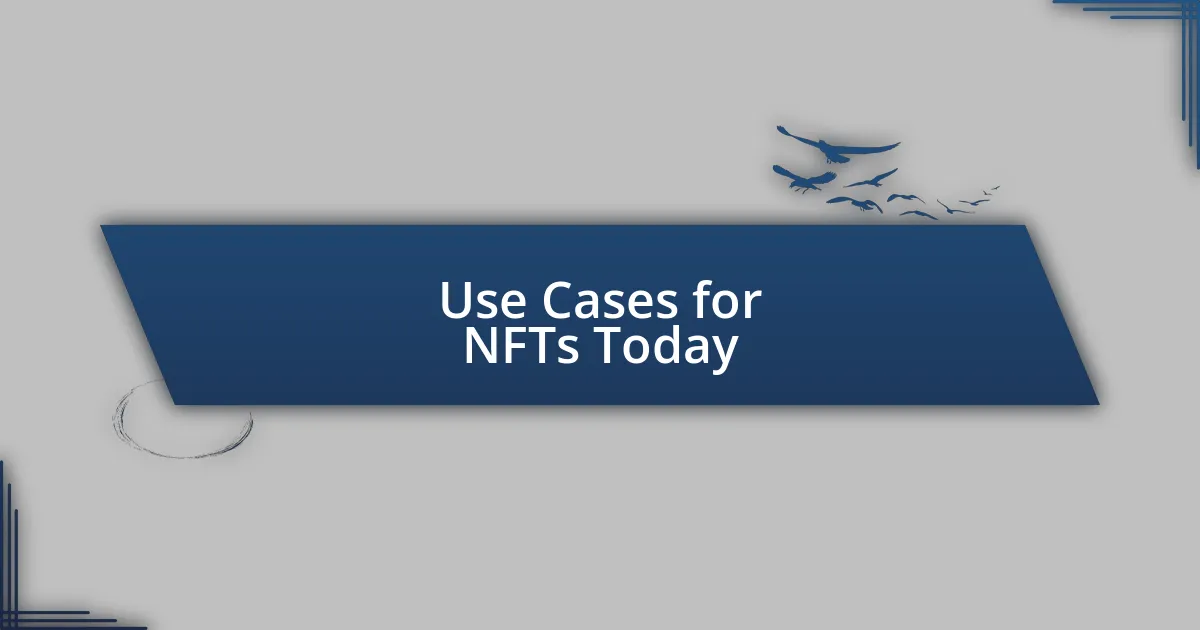
Use Cases for NFTs Today
NFTs have fascinating use cases today that extend far beyond simple collectibles. For instance, I’ve seen how musicians are embracing NFTs to sell exclusive tracks or concert experiences directly to their fans. It’s incredible to think that a fan can own a unique piece of music or get exclusive backstage access, enhancing their connection to the artist in a way that’s never been possible before.
Moreover, virtual real estate is another emerging use case that intrigues me. In digital worlds like Decentraland, people are buying, selling, and even building on virtual land through NFTs. It’s a wild concept to consider how virtual properties can hold value similar to physical real estate. This evolution asks us to rethink not only what ownership means but also how we interact with space—both real and imagined.
Then there are NFTs in gaming, where my enthusiasm really kicks in. Players can own unique in-game items, skins, or characters as NFTs, which they can trade with others or use across different games. This development excites me because traditional gaming often limits ownership, while this new model empowers players. It’s as if we’re finally stepping into an era where gamers have a stake in their own experiences.
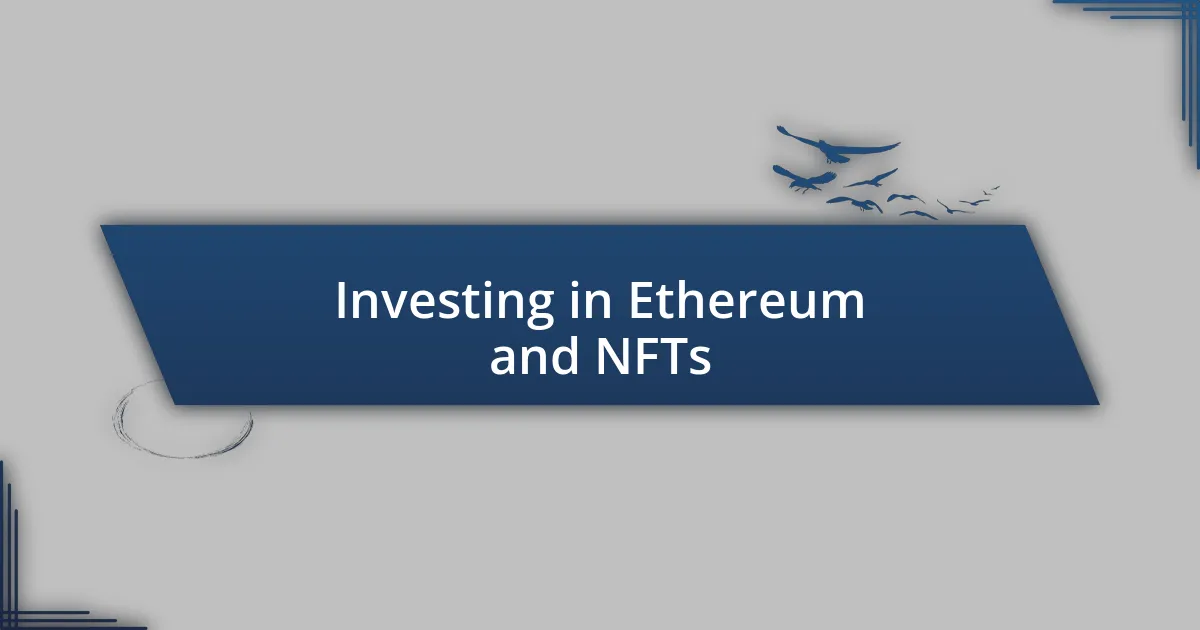
Investing in Ethereum and NFTs
Investing in Ethereum has been a decision I’ve pondered over quite a bit. On one hand, Ethereum’s smart contracts and decentralized applications open up a world of possibilities. On the other, the volatility in its price can be a little daunting. Have you ever felt that rush of excitement paired with a tinge of worry when you invest in something with so much potential?
When it comes to NFTs, I find the investment landscape equally compelling yet complex. For instance, I’ve dabbled in buying a few digital art pieces, and the excitement of owning something unique in the digital space is truly exhilarating. But let me tell you, the market’s unpredictability can feel like riding a roller coaster. Have you ever bought an NFT thinking it would skyrocket in value, only to watch it fluctuate day by day? It’s crucial to do your homework and really understand the value behind a piece or project before committing—something I’ve learned the hard way.
In my experience, patience in both Ethereum and NFT investments is vital. I’ve seen friends jump into the market impulsively, only to regret it later when things didn’t go as planned. How often do we rush into decisions without sufficient research? The key takeaway here is to balance enthusiasm with caution—whether you’re exploring Ethereum’s potential or the vibrant world of NFTs.
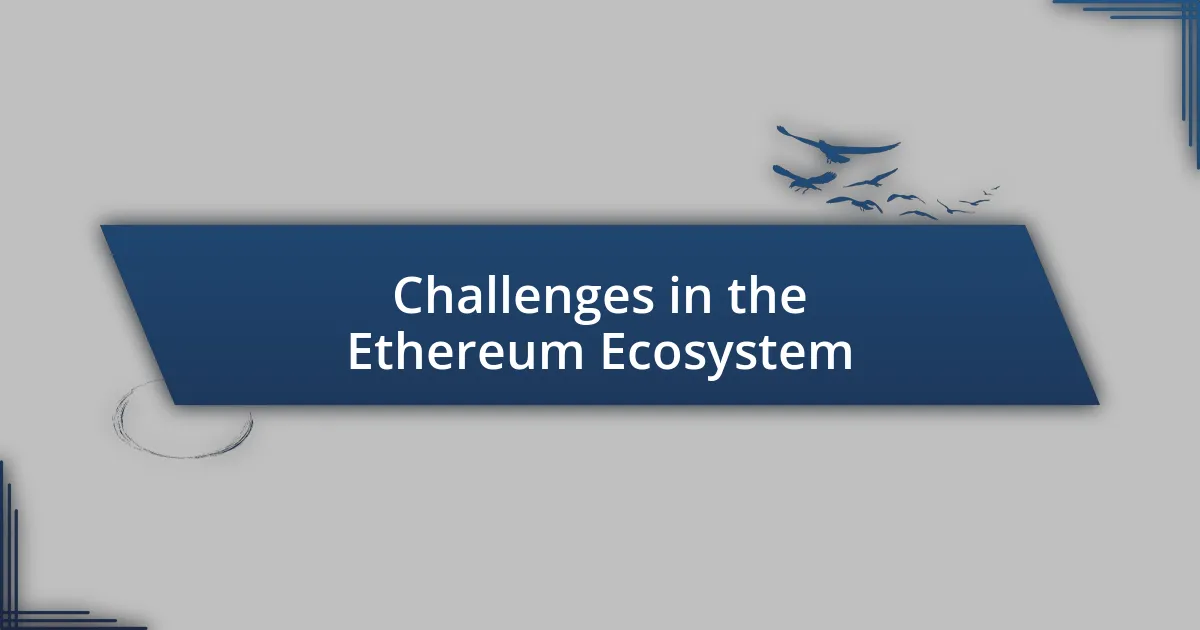
Challenges in the Ethereum Ecosystem
The Ethereum ecosystem already faces significant challenges, one of which is scalability. I remember attending a virtual conference where developers shared their struggles with transaction speeds during peak times. Can you imagine trying to send or receive Ethereum during a surge when the network becomes congested? It can lead to frustrating delays and higher gas fees, which are transaction costs that can quickly eat into profits.
Another challenge that stands out to me is the security of decentralized applications (dApps). I’ve interacted with several dApps and have often wondered about their vulnerability to hacks. Just last year, I read about a significant breach that left many investors in dismay—it’s a stark reminder that while the technology is revolutionary, it’s not bulletproof. How do we foster innovation while ensuring robust security measures?
Finally, the environmental impact of Ethereum remains a hot topic. I’ve personally struggled with the ethical dilemma of contributing to high energy consumption through my transactions. Have you ever felt conflicted about supporting a technology that might be harmful to our planet? It emphasizes the need for Ethereum to transition to more sustainable protocols, which is currently in progress but still a concern for many of us who care about the environment.

